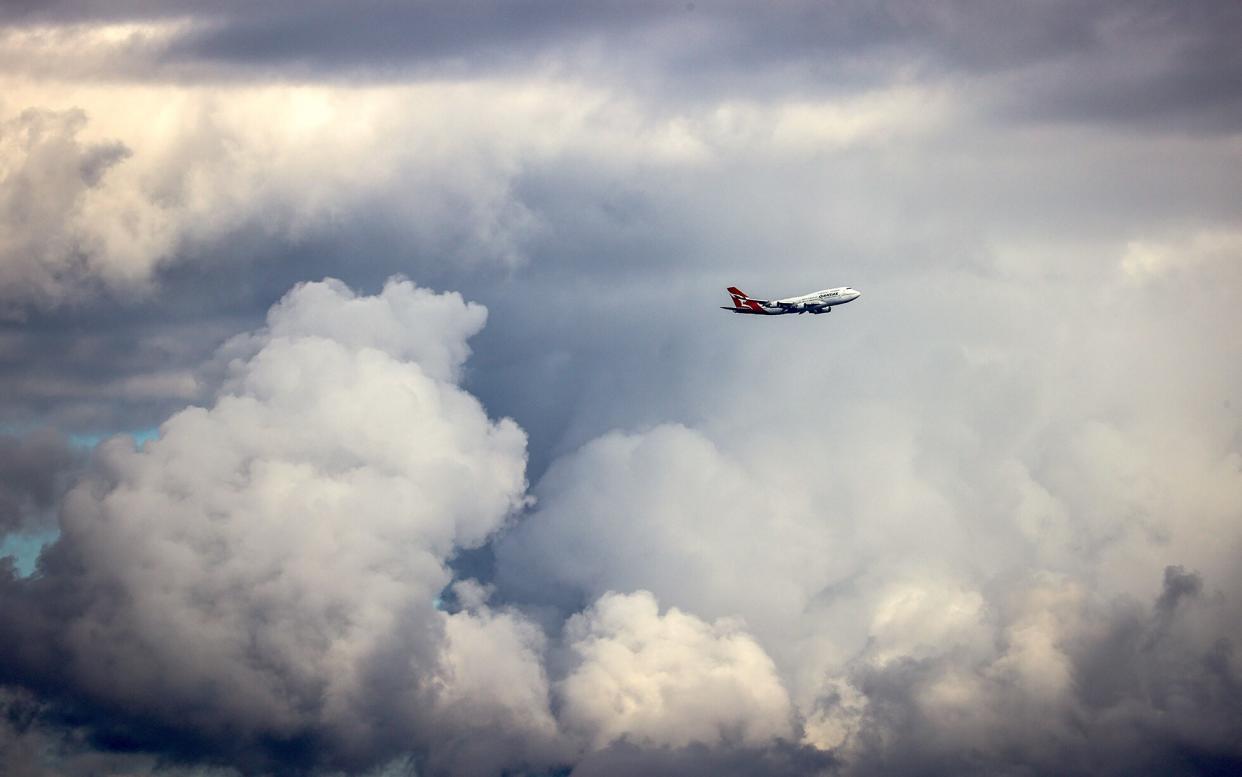For goodness sake, let's stop taking sightseeing 'flights to nowhere'

Beside a Sydney Kingsford Smith check-in desk, a family of four stand giddily clutching their boarding passes. Armed with cameras, selfie sticks and antibacterial wipes, they’re ready to ascend into post-Covid bliss.
Simultaneously, at Taipei Taoyuan, a fidgety, socially distanced tour group is shimmying through security, while three hours further north at Tokyo Haneda, a pair of honeymooners dip their surgical facemasks to take a glug of airport lounge bubbles.
No, you didn’t miss Grant Shapps’ announcement of Australian, Taiwanese or Japanese travel corridors – Britons may not journey so far east with ease until at least 2021. Instead, here you have the germ of an ugly new travel trend that’s taking off in Asia and the Pacific.
The “flight to nowhere” – thought up by airlines to keep their mothballed planes in the sky – is more boomerang than beeline. They’re being marketed as scenic or experiential flights, and last month, EVA and ANA flew around Asian airspace just, well… because.
On October 10, Qantas will fly low over the sandstone monolith, Uluru, before taking in the Great Barrier Reef and the Sydney Harbour Bridge. Then – you guessed it – will land back at Sydney.
“It’s probably the fastest-selling flight in Qantas history,” said an airline spokesperson – as Aussie dollar symbols no doubt revolved behind their sunglasses. The plane’s 134 seats, priced between $575 (£445) and $2,765 (£2,145), flew off the shelf in just ten minutes, like hot business class potato cakes.
But while Qantas, EVA and ANA are no doubt cock-a-hoop at the prospect of cash flow in slender times, are the vast majority of us allowed to be a tad miffed? The idea of superfluous flights (and their emissions) being catapulted into the atmosphere seems like a well-sanitised finger up at anyone with an iota of concern for our shared environment.
I’m not against flying per se – in the grand scheme of things, I believe some air travel is a necessary evil for distributing much needed tourist wealth to parts of the world that desperately need it.
As soon as we can, we should travel far and wide, in order to help restore some sort of global economic parity. Countries dependent upon tourism will need visitors. But the idea of self-serving airlines flying around aimlessly leaves a particularly sour taste in the mouth.
Qantas say their flights will be carbon offset – but come on, most of us know that offsetting is a façade, designed to purge the middle classes of shame. Not flying in the first place is – unsurprisingly – infinitely better.
From the consumer’s perspective, I get the appeal. We are desperate to travel again and enjoy some degree of normality – however, these airlines must act responsibly. This is not a case of “give them what they want” – but another example of powerful lobbies getting away with reckless behaviour.
Likewise, the last thing we need now is to bring more people into close proximity than absolutely necessary. Packing passengers into a sightseeing germ-tube seems wholly at odds with today’s status quo.
As the travel industry finds its feet, it must recalibrate and rework the old model, in order to come out with something stronger and better fitting for the future. I have optimism for the world we may inherit after all these hardships, but these needless flights are the antithesis of revolution. They’re anachronisms that belong in the 1960s – part of the same era when people still thought smoking was good for their health.
Looking down from the perspective of a plane as it spews noxious gas from its rear end is – ironically – the greatest way to see just how fragile and interconnected our planet really is. I’ve lost hours pondering the arid custard sands of North Africa, merging into the green belt of the Equator. I’ve banked over the snowy slopes of the Andes and seen the Amazon rainforest disappear over every horizon. Flying is never not amazing; however, we shouldn’t lose sight of the fact that every single ticket now comes at a shared, grave cost.
As the October 10 Qantas flight swoons over the Great Barrier Reef, will the pilot point out spots of irreparable bleaching? When they depart, as planned, for a scenic flight from Melbourne to the Antarctic in November, will the cabin crew tally up the sheets of broken ice shelf? Will there be any sardonic appreciation for the irony of it all?
Flying makes me feel guilty, but that guilt is tempered ever so slightly by knowing I am – at least – flying from A to B. When we reflect in a few years’ time, I hope these flights will be banished, once and for all, to Covid’s Room 101 alongside Zoom quizzes and banana breads.


